
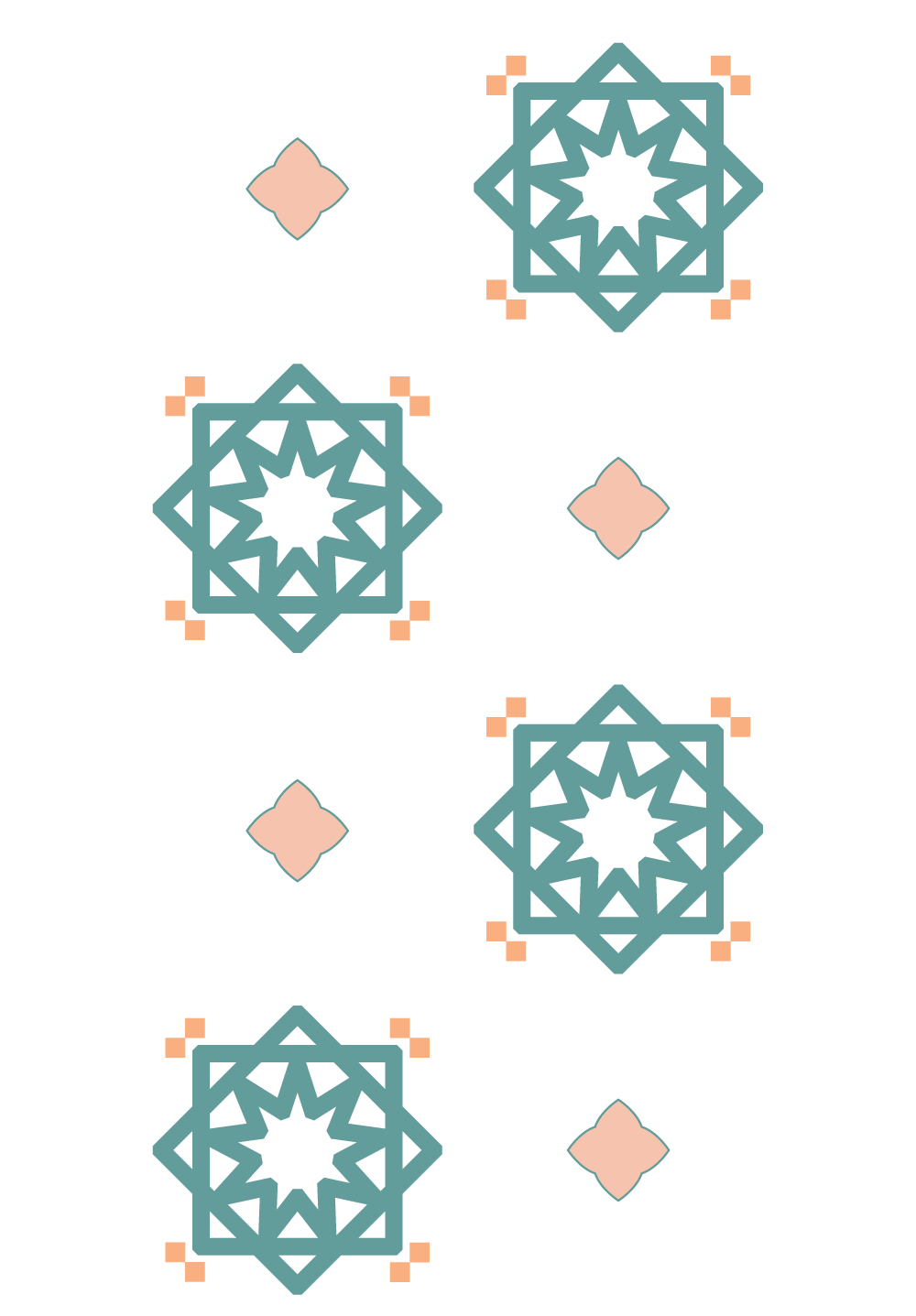
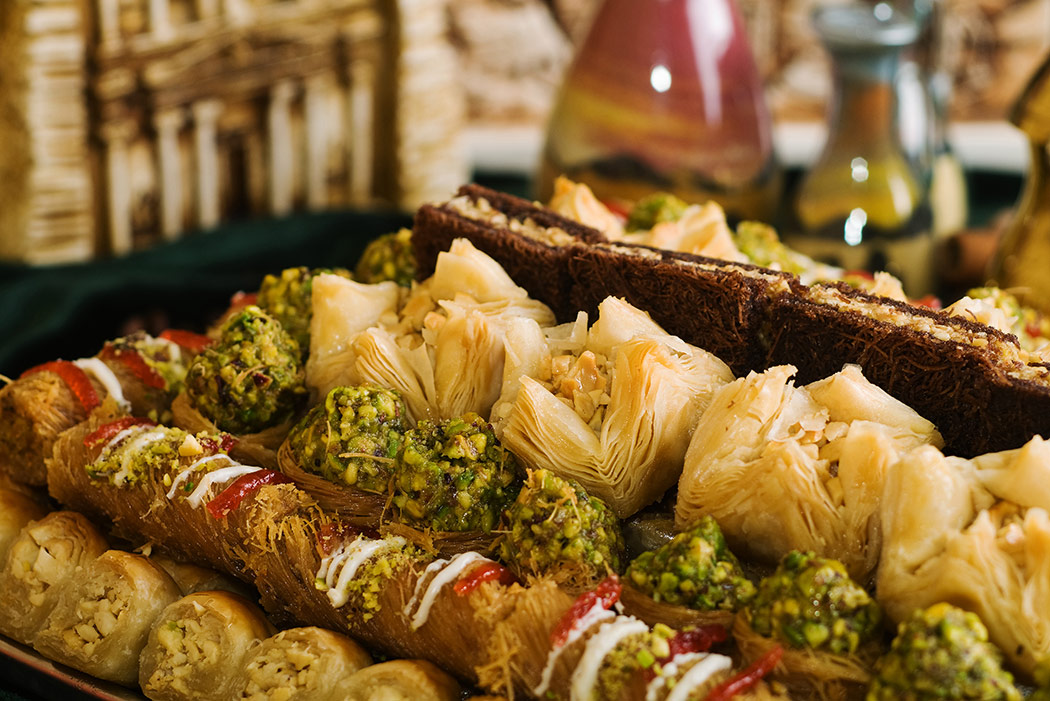
Have you ever thought about the names of some Arabian desserts? And the stories behind their names? In this tab you can learn more about the stories behind these names. We hope you enjoy it.

‘Fingers of Zainab’ is one of the most famous Egyptian sweets. Naming it goes back to two different narratives. The first states that there was a very skilled girl at cooking called Zainab, and she made this dessert for the first time. When she presented it to the guests, they said, "Bless the fingers of Zainab." The second narrative says that Zainab's fingers refer to the name of Sayyida Zainab, the daughter of Al Hussain. The ingredients of this dessert are common at all Egyptian homes. They named it Zainab’s Fingers out of their love for Sayyida Zainab.
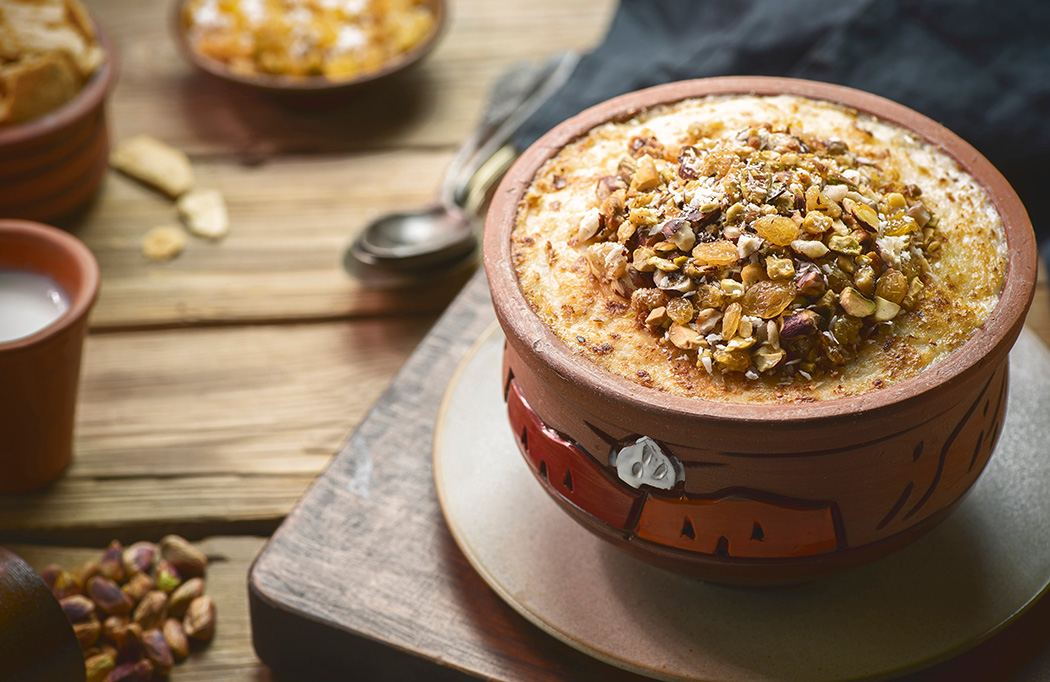
Umm Ali [Arabic for Ali’s Mother] is the wife of Izz al-Din Aybak, the first of the Mamluk sultans after the end of the Ayyubid rule, who was married to Shajarat Al-Durr and when he married his wife from whom he had his son Ali, Shajarat Al-Durr got angry and took revenge on him and killed him. In response, Umm Ali inaugurated her son Ali as the ruler of the country and killed Shajarat Al-Durr. To celebrate that, Umm Ali decided to mix flour, sugar, ghee, and bread and requested to distribute this plate among the public. And this is where the name ‘Umm Ali’ came from.

Luqaimat is an oriental dessert that spread globally. It is well known by its spherical shape and delicious taste. It first appeared in Iraq, and then spread across Arabia, Turkey and Greece. Although the reason for the name is still unknown, the most popular story behind its name Luqaimat, which first appeared in Iraq, is that a girl loved a young man named Luqai and when she heard about his death, she created this dessert while she was grieving. Her father went in and asked her what she’s doing, and she answered ‘Luqai mat [Arabic for mat is dead].’ The name for this dessert becoming Luqaimat.
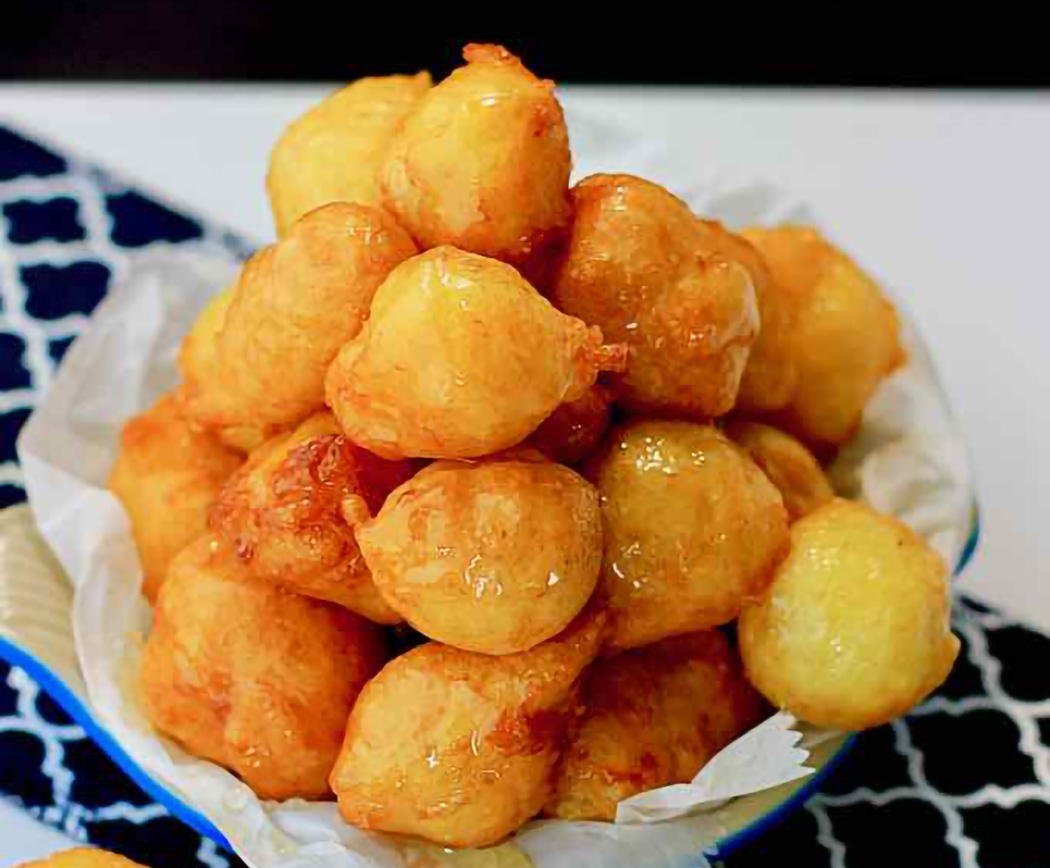
Lokmat Al-Qadi (Arabic for judge’s bite) first appeared in the Abbasid era. It was supposedly called the Judge’s Ears because it looks like ears, and judges always listen. In the Ottoman era, it was called a buoy, due to its light weight during frying; it floats over the oil. It also has other names, such as dumplings and luqaimat (small bites).

There is no reliable narrative behind the name Qatayef (Arabic for picking something). Some say it dates back to the Abbasid era, while others say the first person who ate it was the Umayyad Caliph Suleiman ibn Abd al-Malik in the year (98 AH) in Ramadan. There are many narratives behind naming Qatayef. There is this narrative which states that In the Fatimid era, chefs were competing to prepare desserts for the Holy Month, and the Qatayef pie was among these plates. It was beautifully prepared and decorated with nuts and served on a large plate, so the guests picked a lot of it. While others attribute the origin of its name to the similarity between its texture and the velvet cloth (in Arabic: Qatifa).

Historians disagree about the date of its emergence, between the Umayyad, Fatimid and Mamluk eras. Among the historical narratives that it was made for the Caliph Muawiya bin Abi Sufyan in the Levant, in Ramadan as he needs a lot of sugars due to the difficulty of fasting for him and his extreme hunger during the day. He had it for Suhoor according to the advice of his doctor, and that is why it was called "Kunafa Muawiya".
The other narrative says that a Circassian citizen came from Syria to Palestine and transferred the ‘chenafa’ or ‘kunafa’ recipe to the city of Nablus in Palestine and from here it was called ‘kunafa Nablusia.’Kunafa had this name as a derivative from ‘chenafa,’ which is a Circassian word and it consists of two syllables chena (bulbul, which means a bird in arabic) and fa (colour), meaning the colour of bulbul.
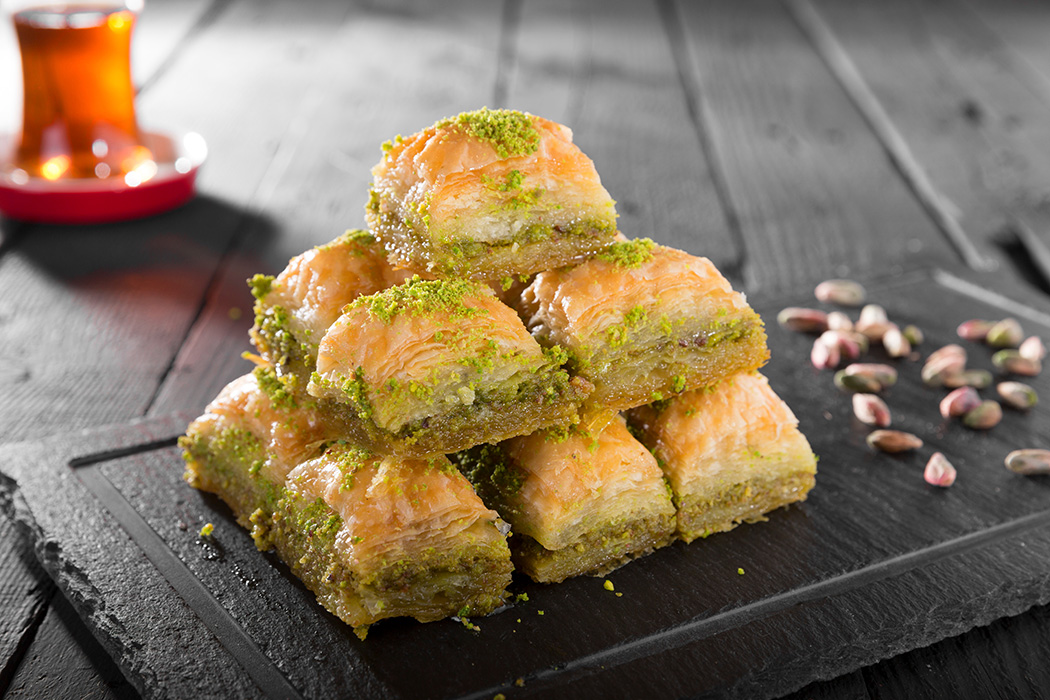
The name Baklava is a Turkish combination of two words, Bak and Lava. The name’s story goes back to the wife of an Ottoman sultan called Lava who first created this recipe. Bak in Turkish language means Look. So, the word Baklava means look what Lava did.
As for its origin, it goes back to BC in the era of the Assyrian era, when layers of bread dough were placed with nuts, or dried fruits and honey, and it was considered a primitive baklava. Then it became popular in Ottoman cuisine, and it was distributed in religious and political celebrations.